#gamma rays
Text
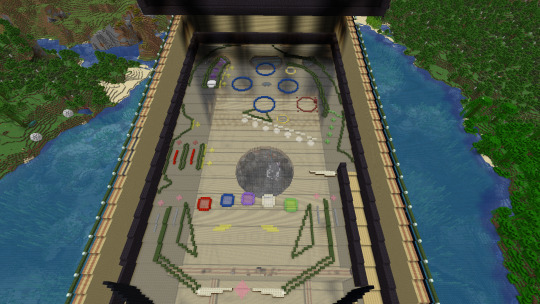
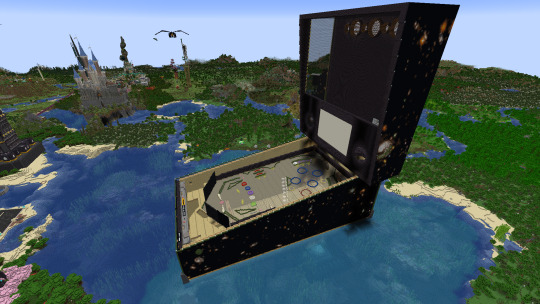
I just hit a huge milestone designing my giant pinball machine in Minecraft: the playfield is all laid out!
I'm calling the game Deep Field, and there's five primary objectives based on hitting different shots representing bands of the electromagnetic spectrum.
IR: rollover switches
Visible light: pop bumpers
UV: captive ball
X-rays: Drop targets
Gamma rays: spinner
Also, a kinetic sling disc to light locks for Pluto Multiball!
#hermitcraft#deep field#jwst#pinball#electromagnetic spectrum#xray#infrared#visible light#gamma rays#no radio or microwaves not a single luxury#joehillstsd#joehills#hermitcraft 9#joe hills#bobby mod
1K notes
·
View notes
Text

A High Energy Fleet - February 25th, 1996.
"Looking like a fleet of futuristic starcruisers poised over planet Earth, NASA's highly successful series of High Energy Astrophysical Observatory (HEAO) spacecraft appear above in a vintage illustration. Labeled A, B, and C in this conceptual picture, the spacebased telescopes were known as HEAO-1, HEAO-2, and HEAO-3 respectively. HEAO-1 and HEAO-2 were responsible for revealing to earthlings the wonders of the X-ray sky, discovering 1,000s of celestial sources of high-energy radiation. HEAO-2, also known as the Einstein Observatory, was launched near the date of the famous physicist's 100th birthday (November of 1978) and was the first large, fully imaging X-ray telescope in space. HEAO-3, the last in the series, was launched in 1979 and measured high energy cosmic-ray particles and gamma-rays."
#nasa#space#cosmos#universe#astronomy#astrophysics#astrophotography#spacecraft#telescopes#x rays#gamma rays
44 notes
·
View notes
Text

#she hulk#jennifer walters#sensational she hulk#savage she hulk#hulk#hulks#women of marvel#gamma powered#gamma rays#gamma#marvel ladies#marvel girls#marvel women#marvel comics#marvel
53 notes
·
View notes
Text

Pink & Black 496
#pinkandblackcomic#pink & black#pink#black#gamma rays#shooting star#make a wish#power grid#solar flare
15 notes
·
View notes
Text

Into the jaws of death...
#marvel#the incrediable hulk#the hulk#doc bruce banner#bruce banner#doctor bruce banner#gamma rays#comics#comic art#comic style#marvel comics
14 notes
·
View notes
Text

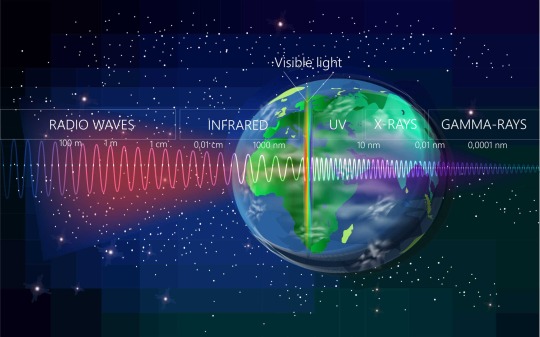


Will gamma rays turn YOU into the Incredible Hulk??? ☢️
#hulk#the incredible hulk#the hulk#bruce banner#fun fact#fun facts#trivia#did you know#comics#comic books#marvel#marvel comics#marvel superheroes#marvel characters#science#gamma#gamma rays#science is cool#science is wild#science tumblr
8 notes
·
View notes
Text
youtube
Hulk: Gamma Sleep
#hulk gamma sleep#hulk 2003#incredible hulk#she hulk#hulk#hulk art#hulk comics#marvel#the avengers#avengers#ironman#thor#spiderman#gamma#gamma rays#avengers endgame#captain america#betty ross#thunderbolt ross#aang lee#hulk smash#marvel mcu#mcu rp#mcu#marvel comics#marvel rp#rpg#loki laufeyson#loki series#loki season 2
2 notes
·
View notes
Text
CAN WE SEE COLOR IN SPACE??
Blog# 211
Wednesday, July 20th, 2022
Welcome back,
Believe it or not the human eye can see about 7,00,000,000 colors. But, did you know that colors exist that you cannot see? Color does not change in space, because the wavelengths remain the same. Although you can see all the colors of the rainbow, plus every color mixture from those colors, you only have three color detectors in your eyes. These color detectors, called cones, have a preference for a particular type of light.

Each cone of your eye reads different parts of the light spectrum. The electromagnetic spectrum refers to the entire range and scope of frequencies of electromagnetic radiation and their respective, associated photon wavelengths. Your eyes get excited by the wavelengths and can see the wavelengths for visible light. If you could see infrared, you would see red. If you saw ultraviolet wavelengths you would see violet wavelengths.
The Visible light (and near-infrared light) is typically absorbed and emitted by electrons in molecules and atoms that move from one energy level to another. This action allows the chemical mechanisms that underlie human vision and plant photosynthesis. The light that excites the human visual system is a very small portion of the electromagnetic spectrum.

A rainbow shows the optical (visible) part of the electromagnetic spectrum; infrared (if it could be seen) would be located just beyond the red side of the rainbow with ultraviolet appearing just beyond the violet end.
Every object you see reflects light into your eye. That reflected light reaches our small, medium, and large cone cells located in the eye. Each cell reads a wavelength. The cones send a message to your brain telling it how much long, medium, and short wavelength light bounces off an object. Putting all that into a number code we refer to as color. Although light does not have a color, our brain generates a code when the spectrum of light enters the eye.

During the 1990s NASA launched one of the most complex space telescopes into Earth’s Low Orbit. Low Orbit is the altitude between the Earth’s surface and 2,000 kilometers (1,200 mi). Because it is outside our atmosphere, the telescope can view astronomical objects across a broad swath of the electromagnetic spectrum, from ultraviolet light, to visible, to near-infrared wavelengths. The telescope can also see faint objects near bright objects.
The telescope can resolve astronomical objects with an angular size of 0.05 arc seconds, which is like seeing a pair of fireflies in Tokyo from your home in Maryland. This razor-sharp vision is 10 to 20 times better than typical resolution with large ground-based telescopes.

It has revealed a whole new level of detail and complexity in a variety of celestial phenomena, from nearby stars to galaxies near the limits of the observable universe
When we look at a picture of a Nebula taken with the Hubble telescope we see terrific colors emitting from it. But is that how it really appears in space? No, for the sake of science, scientists color the pictures.

This famous picture of the Eagle Nebula, named Pillars of Creation, shows fantastic colors surrounding the nebula. Researchers will often add artificial colors to focus on an element or feature they are trying to study. Assigning colors to different wavelengths allows them to learn more about each object. Infrared, microwaves, and radio waves give off deep reds. Ultraviolet, X-Rays, and Gamma-rays give of deep violet colors. While the Hubble telescope can detect wavelengths our eyes cannot see, scientists also color them to keep us interested in space.
Originally published on https://osr.org
COMING UP!!
(Saturday, July 23rd, 2022)
“WHY IS SPACE BLACK??”
#astrophotography#astrophysics#Astronomy#atmosphere#spacecraft#outer space#space#Sunspot#alternate universe#white universe#Parallel Universe#universe#Dark Matter#gamma rays#strange matter#antimatter#Mars#astronomy#parallel universe#astronomylover
72 notes
·
View notes
Text
Figure 20.3 summarises the wavelengths and frequencies of some regions of the electromagnetic spectrum. (...) The infrared region of the electromagnetic spectrum (figure 20.3) covers the range of wavelengths from 7.8 × 10-⁷ m (just longer than the visible than the visible region) to 2.0 × 10-³ m (just shorter than the microwave region).
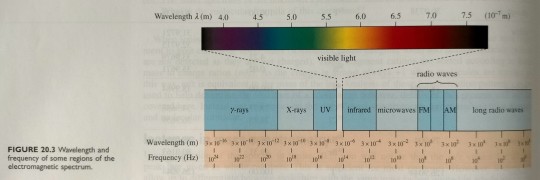
"Chemistry" 2e - Blackman, A., Bottle, S., Schmid, S., Mocerino, M., Wille, U.
#book quotes#chemistry#nonfiction#textbook#wavelength#electromagnetic spectrum#gamma rays#x rays#ultraviolet light#uv light#visible light#infrared light#microwaves#radio waves#fm radio#am radio#long radio waves#frequency
2 notes
·
View notes
Text

#coulomb#kay faraday#capacitors#capacity#positron#gamma rays#gamma world#x ray#x ray machine#acceleration#velocity#speed#quantum mechanics#mechanic#mechanical#adeptus mechanicus#love mechanics#technical analysis#technically#technical difficulties#technicalsupport#technician#the mechanisms#quantum#feynman technique#techniques#gear#gears#astronomy
2 notes
·
View notes
Text

Diagram of the Electromagnetic Spectrum
#g#sound waves#electromagnetic spectrum#infographic#radio waves#microwaves#telephone#infrared radiation#radiation#uv rays#xray#gamma rays
2 notes
·
View notes
Text
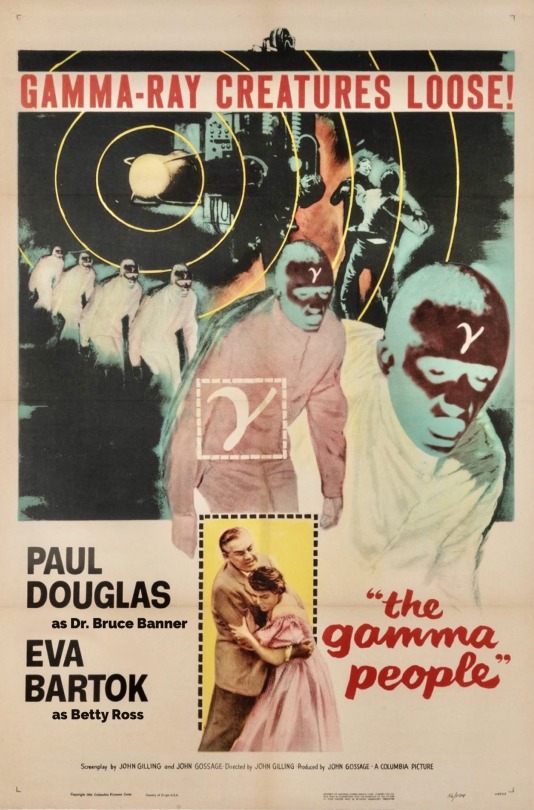
4 notes
·
View notes
Text
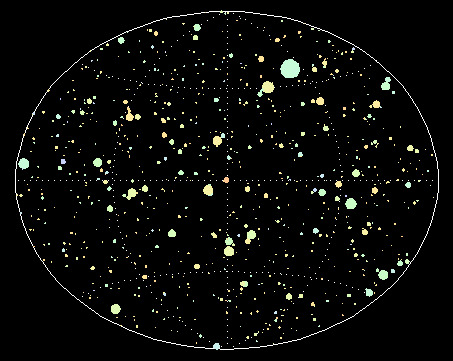
Gamma Ray Bursts from the Unknown - August 27th, 1995.
"Gamma Ray Bursts (GRBs) pose one of the greatest mysteries of modern astronomy. About once a day, the gamma-ray sky lights up with a spectacular explosion. No one knows what causes these explosions or even how far away they are. The above map represents the entire sky in coordinates centered on our galaxy, the Milky Way. It shows the positions of over 800 of these mysterious bursts of energy, detected by the BATSE instrument onboard NASA'S Compton Gamma Ray Observatory. Before BATSE, most astronomers thought that most GRBs occurred in the disk of our galaxy, but the above sky map shows little sign of this. The distance scale of GRBs was the topic of a historic debate in April of 1995. The positions in the map above are currently being studied in great detail in an effort to uncover a clue about the nature of GRBs."
108 notes
·
View notes
Text









#wolverine#incredible hulk#incredible hulk 340#todd mcfarlane#red hulk#grey hulk#savage grey hulk#james howlett#bruce banner#thaddeus ross#general ross#weapon x#gamma rays#gamma powered#logan#marvel#marvel comics
56 notes
·
View notes
Text
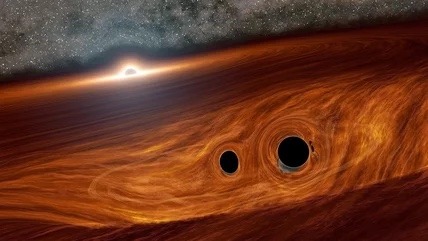
The merger of two black holes.
On April 11, 2022, a new observation was published in the journal Physical Review Letters, describing the merger of two black holes which resulted in a violent shift in velocity. After the merger, the more massive single black hole shot off at approximately 5 million miles per hour.
There are two proposed resting places for the newly merged black hole, each with different probabilities.
Understanding how and why it ultimately settles in can help us to create better gravitational models. It can also tell us more about the formation of supermassive black holes like the one that's believed to exist at the center of our own galaxy.
Picture credit @nasa
˚ ✦ 🪐 . . ˚ . 🌀 . ✦ ˚ .
🚀 . ˚ * ✦ . . ✦ ˚ ☄️ ˚🌒 .˚ ✦ . . ˚ . 🌀
#space#black hole#black holes#science#astronomy#nasa#milky way#outer space#galaxy#universe#observatory#physics#supermassive black hole#gamma rays#cosmic wonders#astrophotography#james webb telescope#galaxies#space science#astrophysics#amazing
12 notes
·
View notes
Photo

My acquisition of Hulk sketch cover by @craigrousseau
#Craig Rousseau#art purchase#purchased art#sketch cover#sketch cover art#Marvel Comics sketch cover#Marvel sketch cover#The Incredible Hulk#The Hulk#Hulk#Bruce Banner#Defenders#Avengers#gamma radiation#gamma rays#Avengers art#Marvel Comics#Marvel Comics art#comic art#comic book art#comics#comic books#Marvel Superheroes#superhero#superhero art#comic superhero#comic hero#art#artwork#illustration
2 notes
·
View notes